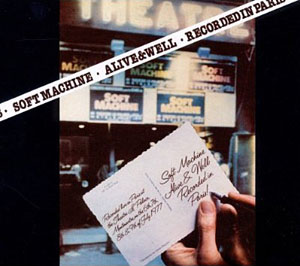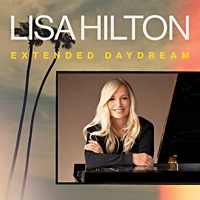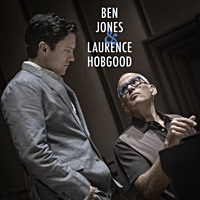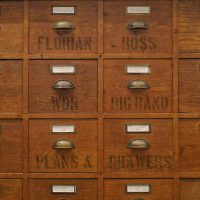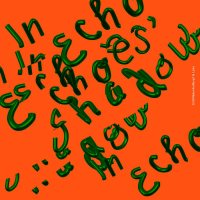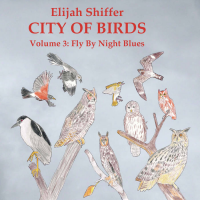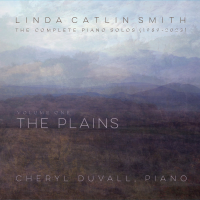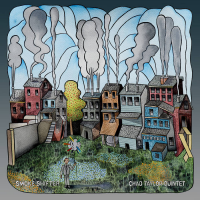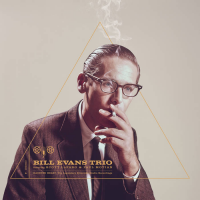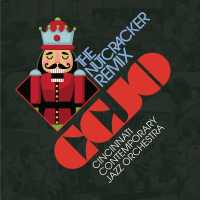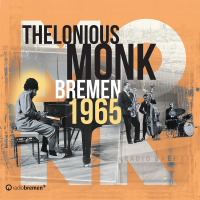Home » Jazz Articles » Extended Analysis » Stan Getz: Stan Getz Quintette: Jazz At Storyville
Stan Getz: Stan Getz Quintette: Jazz At Storyville
 Stan Getz Quintette
Stan Getz QuintetteJazz At Storyville
Royal Roost
1951
For his casual listeners, tenor saxophonist Stan Getz peaked during the bossa nova craze of the early to mid 1960s. And as Verve's five-disc, 2008 box set, The Bossa Nova Albums, reminded casual and committed listeners alike, Getz and bossa nova were, indeed, made for each other.
But anyone willing to rewind through the 1950s will find a cornucopia of less well known, though equally transporting music, as Getz emerged from the big bands to become a small group leader of style and substance. In the first years of the decade, Getz, with his quintets, developed a contrapuntal improvising approach with his frontline partners—first, guitarist Jimmy Raney, and then, valve trombonist Bob Brookmeyer—as captivating as the work of baritone saxophonist Gerry Mulligan and trumpeter Chet Baker in Mulligan's contemporaneous piano-less quartet. Factor in Getz's already singular lyricism, and you have something very special.
The newly released three-disc collection Quintets: The Clef & Norgran Studio Albums (Hip-O Select, 2011), covering a 26-month period beginning in December 1952, has made available once more the three albums which are the apotheosis of Getz's early small group work in the studio: Interpretations, Interpretations #2 and Interpretations #3. The albums—which chart producer Norman Granz's move from 78rpm singles to 10-inch LPs, so permitting Getz and his partners to stretch out on lengthier tracks—shine a particularly fruitful light on Getz's work with Brookmeyer. The Getz/Raney tracks, on the other hand, recorded in December 1952, were made as singles, with necessarily brief solos, most of them taken by Getz. To experience the full potential of the Getz/Raney group it's necessary to rewind further, to an October 28, 1951 live recording made at George Wein's Storyville Club in Boston, during an engagement the group shared with singer Billie Holiday.
Jazz At Storyville has since its original release been only erratically available, under different titles and in a variety of legitimate and bootleg editions. It was first released on Teddy Reig's Royal Roost label as two LPs, Jazz At Storyville Volume 1 and Volume 2. In 1997, it made up part of the three-disc set Stan Getz: The Complete Roost Recordings (Roulette). In 2002, it resurfaced on Japanese EMI. Individual tracks have occasionally turned up on compilations, such as Verve's The Definitive Stan Getz (2002).
 Jazz At Storyville gives new meaning to the expression "fast and loose." Most of the tracks are taken at tempos ranging from medium fast to atomic, with "Parker 51" (written by Raney for his friend Ray Parker) taken at a phenomenal 344 beats per minute. Getz and Raney dance over the tempos with perfect poise, locked in the moment and staying lyrical despite the velocity. Their theme statements and contrapuntal interactions have a precision which is almost literally breathtaking. It's a bravura performance by both men, and the track playing times—most are over five minutes and the longest run to 7:07 and 7:24—mean extended solos are the norm. There are choruses too from pianist Al Haig (who'd been on hand for some of Getz's first small group recordings with Raney, in New York in 1948 and 1949) and drummer Tiny Kahn, but in the main this is Getz's and Raney's show.
Jazz At Storyville gives new meaning to the expression "fast and loose." Most of the tracks are taken at tempos ranging from medium fast to atomic, with "Parker 51" (written by Raney for his friend Ray Parker) taken at a phenomenal 344 beats per minute. Getz and Raney dance over the tempos with perfect poise, locked in the moment and staying lyrical despite the velocity. Their theme statements and contrapuntal interactions have a precision which is almost literally breathtaking. It's a bravura performance by both men, and the track playing times—most are over five minutes and the longest run to 7:07 and 7:24—mean extended solos are the norm. There are choruses too from pianist Al Haig (who'd been on hand for some of Getz's first small group recordings with Raney, in New York in 1948 and 1949) and drummer Tiny Kahn, but in the main this is Getz's and Raney's show. Among its qualities, the album demolishes the myth that Getz couldn't play with heat and passion. Witness this backhanded compliment from an Amazon customer: "These white boys could BURN! To hear this with today's recording equipment would really be somethin,' but none the less you'll DIG IT. These guys were tight and inspire each other on every cut. STAN was the MAN! A TRUE JAZZ GEM!!" Quite so. In this respect, Jazz At Storyville is like a mirror image of Getz's altogether more laidback recordings with another guitarist, Johnny Smith, in 1952, on Smith's masterpiece, Moonlight In Vermont (Roulette).
If ever a Getz album cried out for high-end digital reissue, it's Jazz At Storyville. Meanwhile, 2011's version of the secondhand racks, the web, is on hand.
Tracks: Thou Swell; The Song Is You: Mosquito Knees; Pennies From Heaven; Move; Parker 51; Hershey Bar; Rubberneck; Signal; Everything Happens To Me; Jumpin' With Symphony Sid; Yesterdays; Budo.
Personnel: Stan Getz: tenor saxophone; Jimmy Raney: guitar; Al Haig: piano; Teddy Kotick: bass; Tiny Kahn: drums.
Personnel
Stan Getz
saxophone, tenorAlbum information
Title: Stan Getz Quintette: Jazz At Storyville | Year Released: 2011 | Record Label: Unknown label
Tags
PREVIOUS / NEXT
Support All About Jazz
 All About Jazz has been a pillar of jazz since 1995, championing it as an art form and, more importantly, supporting the musicians who make it. Our enduring commitment has made "AAJ" one of the most culturally important websites of its kind, read by hundreds of thousands of fans, musicians and industry figures every month.
All About Jazz has been a pillar of jazz since 1995, championing it as an art form and, more importantly, supporting the musicians who make it. Our enduring commitment has made "AAJ" one of the most culturally important websites of its kind, read by hundreds of thousands of fans, musicians and industry figures every month.



